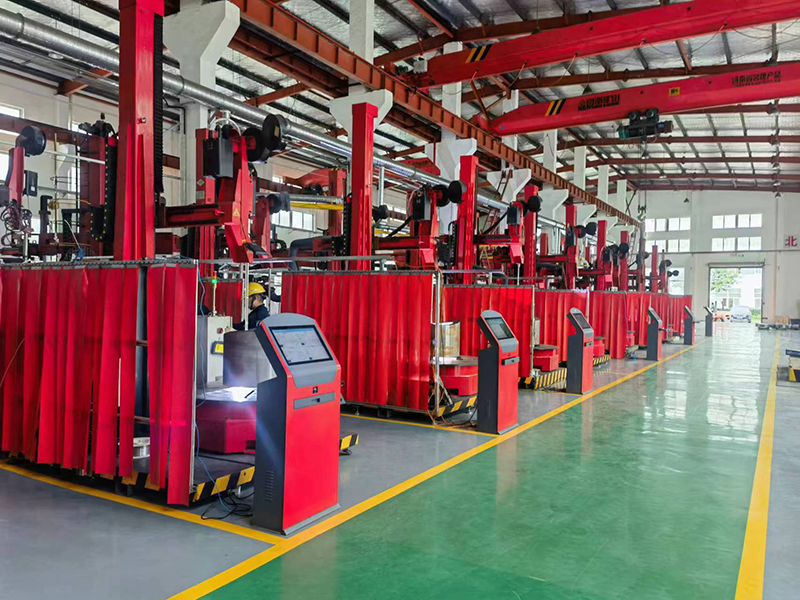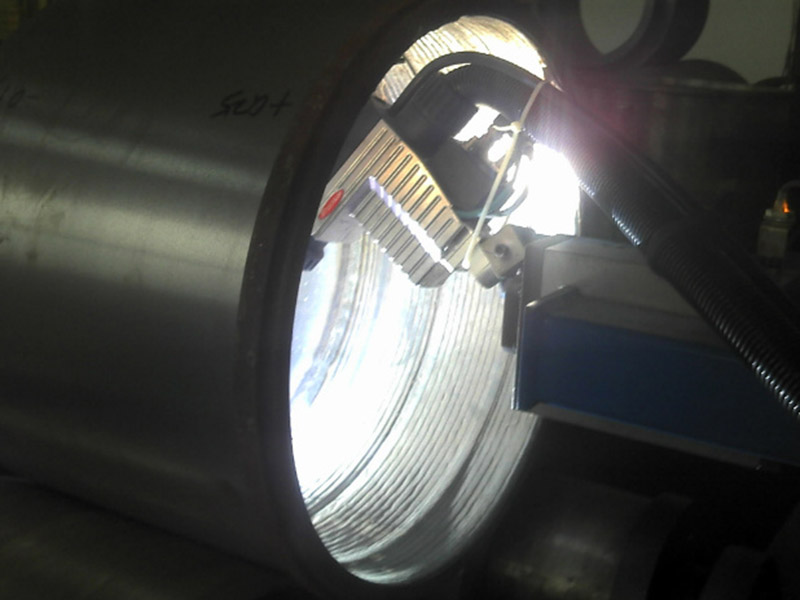Weld Overlay Cladding Process: Principles, Materials, and Advanced Applications
In high-performance industries such as oil and gas, power generation, aerospace, and chemical processing, components often operate under extreme conditions involving high pressure, corrosive fluids, and abrasive environments. To extend service life and enhance reliability without significantly increasing costs, weld overlay cladding has emerged as a key surface engineering solution.
What Is Weld Overlay Cladding?
Weld overlay cladding is a specialized process where a corrosion-resistant or wear-resistant alloy is metallurgically bonded to the surface of a base material. Unlike thermal spraying or adhesive coatings, this technique creates a strong, durable bond capable of withstanding mechanical stresses, temperature fluctuations, and corrosive attack.
The result is a bi-metallic structure — pairing the strength and cost efficiency of the base metal with the advanced surface properties of the clad layer.

FNS Weld Overlay Cladding Equipment
FNS Cladding Technologies and Capabilities
With nearly 20 years of expertise, FNS (Nanjing) provides a complete range of automated weld overlay cladding solutions, designed for various materials, geometries, and industrial applications.
Strip Cladding (SAC & ESC)
- Submerged Arc Cladding (SAC):
Delivers high deposition rates and smooth finishes — ideal for large components like pressure vessels and reactors. - Electroslag Strip Cladding (ESC):
Ensures ultra-low dilution (<5%) and superior metallurgical bonding, commonly used in nuclear-grade overlays.
Key Performance:
- Deposition rate up to 30 kg/hour
- Surface roughness Ra ≤ 3.2 μm
Robotic Weld Overlay Systems
- Cross-slide with rotary positioning:
Enables continuous, uniform welding without arc interruptions. - Pulse welding technology:
Reduces heat input and eliminates the need for preheating, minimizing distortion.
Typical Applications: Shaft refurbishment, valve seat overlays, elbow cladding.

Cladded pipeline with nickel-based alloy overlay for offshore applications
Laser Cladding for Precision Applications
- Micro-groove pre-texturing:
Enhances wetting and bonding, especially on challenging material combinations like copper/steel. - Tight thermal control:
Achieves ±0.1 mm precision with minimal heat-affected zones.
Ideal For: Aerospace nozzles, turbine blades, high-precision tooling.
Cladding Materials & Application Matrix
We offer a full spectrum of cladding alloys tailored to your operational needs:
| Alloy Type | Typical Grades | Key Properties | Common Applications |
| Nickel-based | Inconel 625 / 718 | High-temperature & acid corrosion resistance | Offshore valves, cracking coils |
| Cobalt-based | Stellite 6 / 21 | Wear resistance & red hardness | Valve trims, pump seats |
| Copper-based | CuNi, Aluminum Bronze | Marine corrosion & thermal conductivity | Desalination plants, marine parts |
| Hardfacing | Tungsten Carbide (WC), Ceramic Alloys | Abrasion resistance, HRC ≥ 60 | Mining tools, drill bits |
| Duplex Stainless | 2205 / S32750 | Chloride stress corrosion resistance | LNG tanks, pressure vessels |
Material Selection Tip:
- For corrosive media → Inconel 625, S32750
- For severe wear & impact → Stellite 6, WC overlays
- For cost-sensitive applications → High-chromium iron, Fe-based overlays
Industrial Applications and Case Studies
Our weld overlay cladding systems have proven success across a range of demanding industries:
| Industry | Application | Solution | Outcome |
|---|---|---|---|
| Offshore Oil & Gas | Subsea Christmas Trees | Inconel 625 on A105 base | 3× service life in H₂S environments |
| Mining | Crusher Gear Repair | Tungsten Carbide overlay | 2× wear life, 40% cost reduction |
| Shipbuilding | LNG Corrugated Sheets | Laser overlay with micro-texture | Seamless joints, tensile strength >112 MPa |
| Aerospace | Rocket Nozzles | Gradient Cobalt-based overlay | Withstood 100+ high-temp gas cycles |
Quality Assurance and Inspection
At FNS, every cladded pipeline and overlay product undergoes strict quality control, including:
- In-line monitoring: Infrared melt pool imaging, real-time welding parameter tracking
- Post-process inspections: PT/UT non-destructive testing, microhardness measurement, ASTM A262 corrosion testing, ASTM G65 abrasion testing
- Certification: Full compliance with ASME, ASTM, and client-specific standards
Future Technology Outlook
FNS continues to invest in innovation, focusing on:
- AI-driven welding optimization: Real-time adaptive control of current and feed rates
- Hybrid laser-arc overlay systems: Combining speed with precision for complex geometries
- Next-generation alloys: Nitrogen-enhanced stainless steel for nuclear and high-spec applications
Why Choose FNS Weld Overlay Cladding?
- Proven expertise in corrosion-resistant pipe protection
- Advanced automated systems ensuring consistent quality
- Full support for custom projects across multiple industries
- Global references and certified production processes
Get in Touch with Our Experts
Whether you need weld overlay cladding, cladded pipelines, or tailored corrosion-resistant pipe solutions, FNS delivers performance you can trust. Contact us for technical support, project consultation, or customized quotations.
📩 Email: sales@overlaycladding.com


